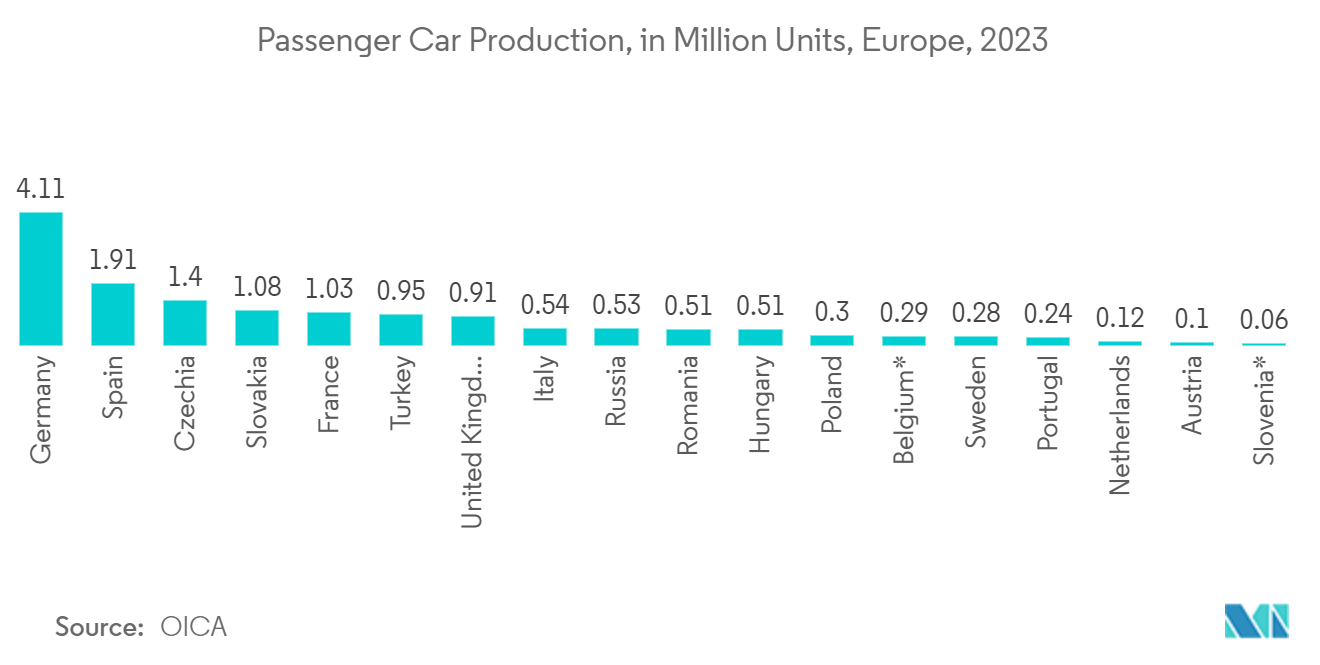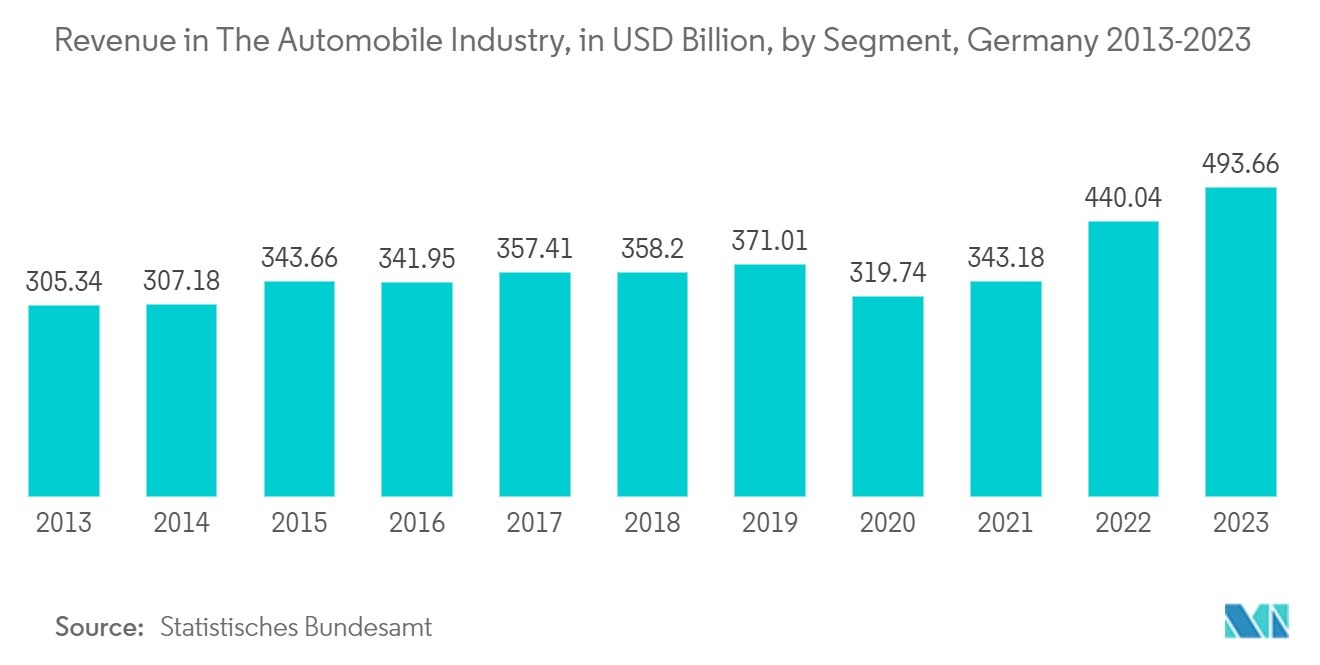Market Trends of Europe 3D Printing Industry
High Adoption of 3D Prototype Parts in Automotive Industry
- The European automotive sector has been thriving and has emerged as a pioneer and driving force behind the country’s development and wealth. In past years, the European automotive sector has risen to the forefront of the global industry.
- With the presence of many global automotive OEMs, Europe enjoys the broad-scale implementation of 3D printing technology for design formulation and R&D applications in the automotive industry. Top automotive leaders such as BMW, Mercedes, Audi, Jaguar Land Rover, Volkswagen, and many others have created a potential space for 3D technology and printers in the European market.
- According to OICA, in 2023, Germany produced the most significant passenger cars in Europe, 4.11 million. Spain ranked second, with almost 1.91 million passenger cars produced.
- In April 2022, Blackstone Technology formulated a plan to market 3D-printed sodium-ion cells for electric cars. The business plans to launch its 3D-printed solid-state battery in the middle of the decade after investing EUR 32 million (USD 33,900,531.60 Million) in a prototype facility in Döbeln, Germany. The solid-state batteries would first be put in the electric buses in Berlin to be tested in a real-world scenario.
- Moreover, several 3D printing methods are employed to manufacture prototypes with rapid turnaround times at Ford's Rapid Technologies Center in Merkenich, Germany. Instead of sending a task out to a business with a several-week lead time, engineers and designers can have their designs in their hands within hours. Designers can create same-day prototypes in the Rapid Technology Center, iterating on numerous designs in a matter of hours. According to Bruno Alves, an additive manufacturing expert at Ford, physical prototypes can have advantages over digital models.

Germany is Expected to Hold the Major Share
- A wide range of established industry players, including EOS, Renishaw, SLM Solutions, Ultimaker, and Photocentric, are well-known throughout Europe for their technical expertise in the field of additive manufacturing. The majority of 3D printers are located in Western Europe, with countries such as Germany, the United Kingdom, Italy, and France driving AM development and applications.
- Moreover, increasing investments in the market studied by various countries in the region may further create significant demand. According to GTAI (Germany Trade & Investment), Germany is home to some of Europe's most advanced 3D printing and additive manufacturing businesses, including aerospace, automotive, equipment, and dentistry.
- According to Statistisches Bundesamt, in 2023, the German automobile industry generated revenues of EUR 457.6 billion (USD 493.6 billion) in the motor vehicles segment, an increase from the previous year.
- One in every three big German industrial companies already uses 3D printing, and two out of every three have already used the technology. This, in turn, may create lucrative opportunities for the market players to expand their footprint in the country, thus boosting market growth.
- For instance, in December 2022, HeadmadeMaterials, a German 3D printing technology provider, intended to enter the ColdMetalFusionAlliance and other significant market players. ColdMetalFusion is a partnership of industry leaders with generations of sintering, additive manufacturing, and traditional industrial production experience. Partners of the Alliance collaborate to provide services, materials, equipment, and technology to clients in the metal production business.


